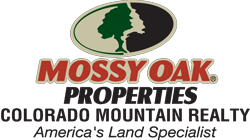When The West Was Wild
At the end of the 19th Century, Colorado was up for grabs, and the industries of mining, forestry, and agriculture were carving the Rocky Mountains into partitions of land. The native people had been dispersed or sent to live on Reservations, and in the years to follow, the great herds of buffalo were reduced to a fraction of the numbers that had once been. Colorado was at risk to succumb to even more damage as the railroads brought people, homesteaders, miners, and even more industry to the area. Just a few decades of westward expansion had changed the landscape, the culture, and the pristine appearance of the land. Now, there were mountain ranges with holes punched into them by mining operations that went boom and bust, creeks poisoned by the sluices and runoff of metal extraction, and old-growth forests that had been cut down thousands of miles of railroad to stitch the cities of the United States together.
With the buffalo gone, other animals such as deer, elk, and bears would soon follow. To create reserves of land that would preserve and protect the remaining wildernesses from destruction, an effort to conserve these places began and was implemented by the highest offices in the land. Colorado was already a popular destination of outdoorsman, hunter, war hero, and one of the most charismatic Presidents in US history: Theodore Roosevelt. His efforts continued to preserve areas across the country, and in 1915, President Woodrow Wilson established Rocky Mountain National Park.
Once valued by Native American tribes such as the Ute, Arapaho, and the Cheyenne as a summer hunting ground, this mountainous area is home to Colorado’s northernmost 14er, Longs Peak, and in spite of decades of mining, homesteading, and other waves of westward expansion. The area was chosen not only because of its relative seclusion but also its striking beauty. RMNP sits at the nexus of other public lands, such as Arapaho and Roosevelt National Forests, Colorado State Forest, and Colorado State Forest State Park.
Settle In The Rocky’s
With over one million acres of public land within striking distance, Estes Park is the small town that many consider the gateway to one of Colorado’s most famous attractions. In many ways, the town carries with it a charm more suited to the Bavarian Alps than the Old West. For wildlife viewing, Estes Park and Rocky Mountain National Park are hard to match. For sportsmen, this area is Colorado’s game management unit 20, run over by herds of moose, elk, deer, and other big game.
Contact us!
Estes Park and Rocky Mountain National Park are about an hour’s drive from Denver and within a few hours of most cities along the Front Range. What are you waiting for? If you want to own property where you can see Colorado in ways that only the indigenous people and early settlers did, there are still places out there for you. And all without having to sacrifice being close to “civilization”, if you are into that kind of thing.
Colorado Mountain Realty has dozens of listings throughout the area that are sure to take your breath away. Contact one of our team members to see how you can own land near such a wonder of nature.

